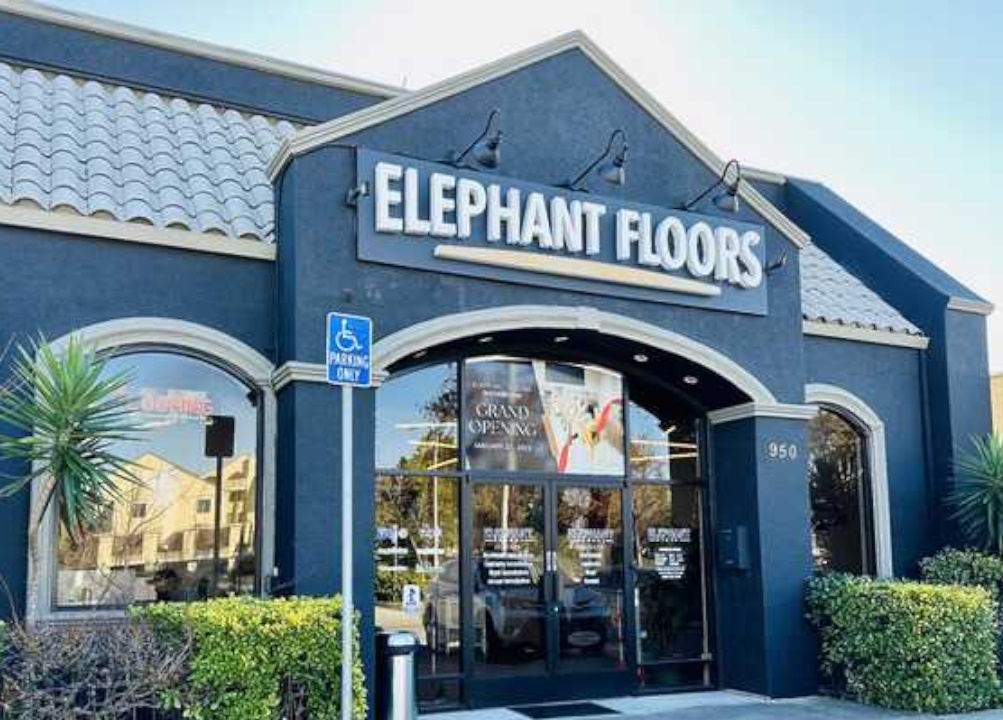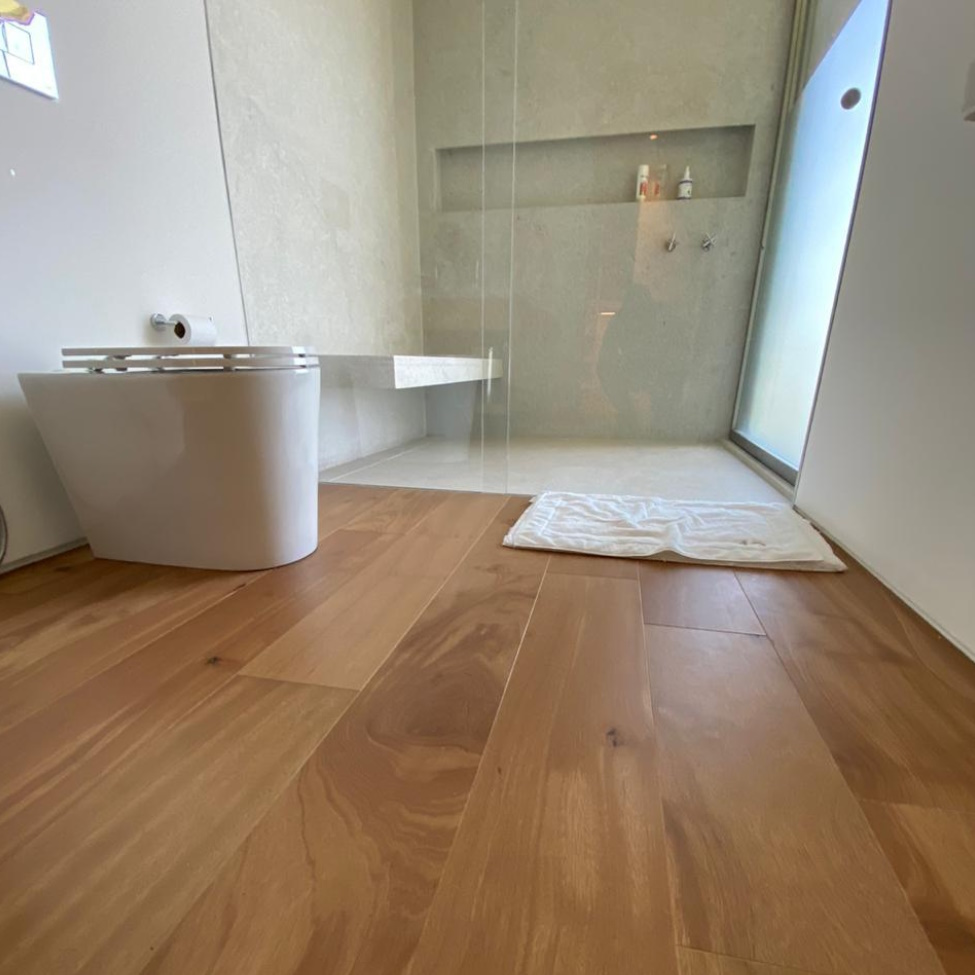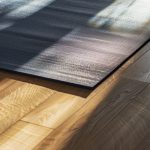- September 5, 2024
Vinyl plank flooring has become a popular choice for homeowners due to its durability, affordability, and variety of styles. There are two main types of luxury vinyl plank (lvp) – glue down and floating.
And yet, for homeowners can be very challenging to choose between glue down and floating vinyl plank flooring can be challenging. In this article, we’ll cover an in-depth comparison to help homeowners make an informed decision.
Key Takeaways
- Durability: Glue down is more stable in high-traffic areas.
- Installation: Floating floors are easier to install and replace.
- Cost: Glue down may be cheaper in materials but more expensive in labor.
- Maintenance: Both types are easy to clean, but repairs differ.
What is Glue Down Vinyl Plank Flooring?
Glue-down vinyl plank flooring involves adhering the planks directly to the subfloor using an adhesive. This method offers a more permanent solution and is ideal for areas with heavy traffic or rolling loads, such as wheelchairs or moving kitchen islands.
Types of Glue Down Flooring
- Engineered Hardwood: Can be glued or nailed.
- Vinyl Sheets and Tiles: Available in hard-set or pressure-set options.
What is Floating Vinyl Plank Flooring?
Floating vinyl plank flooring does not require adhesive. Instead, the planks interlock with each other, creating a “floating” effect over the subfloor. This method is quicker and easier to install, making it a popular DIY choice.
Types of Floating Floors
- Click-Lock Systems: Planks interlock with a tongue-and-groove mechanism.
- Loose Lay: Planks are laid without adhesives, relying on friction and weight to stay in place.
Installation Process
Glue Down Installation
- Prepare the Subfloor: Ensure it is clean, dry, and level.
- Apply Adhesive: Spread the adhesive evenly across the subfloor.
- Lay the Planks: Carefully place each plank, ensuring a tight fit.
- Roll the Floor: Use a floor roller to ensure planks adhere properly.
Floating Installation
- Prepare the Subfloor: Ensure it is clean and free of debris.
- Lay Underlayment (if needed): This can help with sound reduction.
- Connect Planks: Click the planks together using the tongue-and-groove system.
- Finish Edges: Use trim and molding to cover gaps around the perimeter.
Durability and Longevity
Glue-down flooring is often more stable and durable, especially in high-traffic areas. The adhesive ensures the planks stay in place, reducing the risk of movement or lifting. This makes it ideal for commercial spaces or rooms with heavy furniture.
Floating flooring, while also durable, may shift slightly over time, particularly in areas with fluctuating temperatures and humidity. However, it can be easily replaced if damaged, making it a practical choice for residential spaces.
Glue Down vs. Floating: Cost Comparison
Aspect | Glue Down | Floating |
Material Cost | Lower | Higher |
Installation Cost | Higher (professional installation recommended) | Lower (DIY-friendly) |
Long-term Cost | Generally lower maintenance | May require more frequent replacements |
While glue down vinyl planks may be cheaper per square foot, the cost of adhesive and professional installation can make it more expensive overall. Floating floors, on the other hand, might have a higher material cost but can be installed without professional help, reducing labor costs.
Also Read: Laminate Floors | Pros & Cons
Maintenance and Repairs
Both types of flooring are relatively easy to maintain, but repairs differ:
- Glue Down Flooring:
- Easier to replace individual planks.
- Less prone to movement and gaps.
- Requires saving extra planks for future repairs.
- Floating Flooring:
- Planks can be removed and replaced if damaged.
- Interlocking mechanisms can make repairs more complex.
- Ideal for temporary or evolving spaces.
Aesthetics and Design Options
Both glue down and floating vinyl planks offer a wide variety of designs, mimicking the look of hardwood, stone, and other materials. However, floating floors may have a slightly thicker appearance due to the underlayment and interlocking system.
Noise and Comfort
Noise Levels:
- Glue-down floors are typically quieter as they adhere directly to the subfloor.
- Floating floors may produce a slightly hollow sound, which can be mitigated with an underlayment.
Pro Tip: Considering flooring that reduces noise? Choose carpet.
Comfort:
- Both types are comfortable underfoot, but floating floors might offer more cushioning due to the underlayment.
Room Suitability
Room Type | Glue Down | Floating |
High-Traffic Areas | Excellent | Good |
Moisture-Prone Areas | Adequate (with proper adhesive) | Excellent (with moisture barrier) |
Residential Rooms | Good | Excellent |
Commercial Spaces | Excellent | Good |
Pros and Cons Summary Table
Feature | Glue Down | Floating |
Installation | Complex | Easy |
Stability | High | Moderate |
Durability | High | Moderate |
Repair | Easy | Moderate |
Cost | Higher upfront | Lower upfront |
DIY-Friendly | No | Yes |
Noise | Low | Moderate |
Cost Comparison
To have a no BS comparison of price we should consider these factors:
Aspect | Glue Down | Floating |
Material Cost | Generally lower | Generally higher |
Installation Cost | Higher (professional) | Lower (DIY-friendly) |
Maintenance Cost | Moderate | Moderate |
While glue-down flooring may have a lower material cost, the need for professional installation can increase the overall expense. Floating floors, although higher in material cost, can be installed by the homeowner, reducing labor costs.
Also Read: Why Vinyl Flooring is a Great Choice For Your Home
Maintenance and Repairs
Glue down vinyl plank flooring is known for its stability and durability, making it a great option for high-traffic areas. Maintenance involves regular cleaning and occasional re-gluing if planks become loose.
Floating vinyl plank flooring is easier to repair because damaged planks can be removed and replaced without disturbing the entire floor. However, it might require more frequent adjustments due to potential shifting over time.
Aesthetics and Design Options
Both glue-down and floating vinyl planks come in a variety of styles and designs, including those that mimic the look of hardwood, stone, and tile. Floating floors may offer a slightly thicker appearance due to the underlayment used during installation.
Design Feature | Glue Down | Floating |
Appearance | Sleek and flush | Slightly elevated |
Design Variety | Extensive | Extensive |
Customization | Higher due to adhesive options | Moderate, based on interlock |
Wrapping This Up | Glue Down vs. Floating
Apparently, vinyl flooring is pretty affordable, comfortable, and beautiful flooring. However, sometimes people find it hard to choose between gluing down lvp and floating. In this comprehensive guide, we covered everything for homeowners to make a better decision that’ll serve longer.
Ready to get started on your new project? Visit our Flooring store in Sunnyvale and explore our wide range collection of flooring types. Also, our professionals at Elephant Floors would love to help you and guide you through the whole process.
Frequently Asked Questions (FAQs)
Glue-down flooring requires adhesive to secure the planks to the subfloor, providing a more permanent and stable solution. Floating flooring uses a click-lock system that allows the planks to “float” above the subfloor without the need for adhesive.
Glue down vinyl plank flooring is typically better suited for high-traffic areas due to its stability and durability.
Floating vinyl plank flooring is generally easier for DIY installation because it doesn’t require adhesive. Glue-down flooring, on the other hand, is more complex and may require professional installation.
Floating vinyl plank flooring can be more cost-effective in terms of installation since it can be done by the homeowner. Glue-down flooring might have lower material costs but higher installation costs due to the need for professional help.




